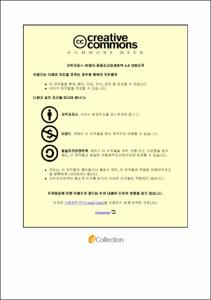러닝로열티 지불의도에 영향을 미치는 서비스품질 요인에 관한 연구
= A Study on the Service Quality Factors Affecting the Franchisees' Intentions of Running Royalty Payments
- Type
- Thesis
- Alternative Title
- 외식 프랜차이즈 산업을 중심으로
- Department
- 대학원 경영학과
- Issued Date
- 2011
- Publisher
- 한성대학교 대학원
- Files in This Item:
-
-
Download
 000000893497.pdf
기타 데이터 / 3.05 MB / Adobe PDF
000000893497.pdf
기타 데이터 / 3.05 MB / Adobe PDF
-
Items in Repository are protected by copyright, with all rights reserved, unless otherwise indicated.